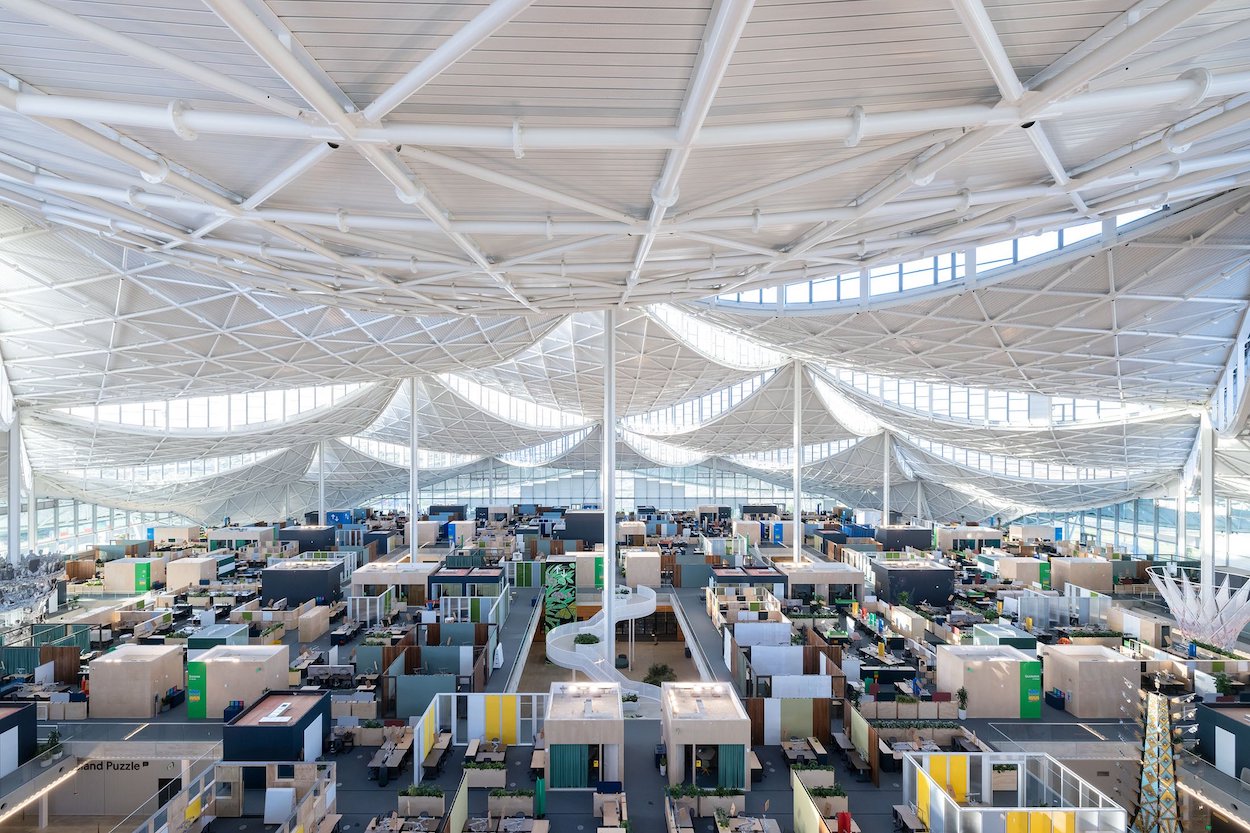In Silicon Valley, Google’s sprawling new Bay View campus designed by Bjarke Ingels Group and Heatherwick Studio is finally complete. The ambitious 42-acre project, which features two office buildings, an 1,000-seat event center, and 240 short-term employee housing units, represents the tech behemoth’s first full-on effort to develop its own workplace environment from the ground up. It’s one of both collaboration and focus: Underneath an enormous canopy roof, a lower level provides mostly gathering areas while the second floor offers flexible team spaces with designated “neighborhoods” that can be rearranged as needed.
Clerestory windows drench the plant-filled interior with ample natural light, while sustainable features such as an integrated geothermal pile system aim to reduce carbon emissions by 50 percent. “Working with a client as data-driven as Google has led to an architecture where every single decision is informed by hard information and empirical analysis,” Ingels says in a statement. “The result is a campus where the striking dragon scale solar canopies harvest every photon that hits the buildings; the energy piles store and extract heating and cooling from the ground, and even the naturally beautiful floras are in fact hard-working root zone gardens that filter and clean the water from the buildings.”
The Bay View campus arrives during a fraught period for in-office work as employee preferences have shifted dramatically after more than two years of dialing in from home. Some tech companies are mandating employees to return to the office at least a few days a week, while others such as Airbnb and Twitter are more lenient, leaving the decision in the hands of their staff. Google’s own policy hasn’t been the most seamless. Despite employees claiming to feel equally productive at home, Google redesigned its Mountain View offices with gimmicky anti-virus balloon walls and outdoor tents to lure staffers into returning. Others criticized the company’s “arbitrary” remote work policies, which afford more leeway to the C-suite and pay cuts for anyone who leaves California.
Why is Silicon Valley so fixated on returning to the status quo? For one, Google has amassed a sizable real estate portfolio that includes the giant Googleplex in Mountain View and New York’s former Port Authority Building, a vast Art Deco structure with more square footage than the Empire State Building. The Bay View Campus also heralds Google’s entry into the ongoing starchitect arms race unfolding within Silicon Valley, which has seen Apple commission an insular donut-like structure by Foster + Partners and Meta’s Mark Zuckerberg enlist Frank Gehry to design an entire “Facebook town.” World-class architects come with high price tags, and investing hundreds of millions in well-appointed campuses only to abandon them after a few years appears to be an unpalatable scenario.
Surface Says: Flashy offices only go so far. As we previously noted, companies risk hemorrhaging talent if they fail to realize the biggest perk of all: peace of mind.

